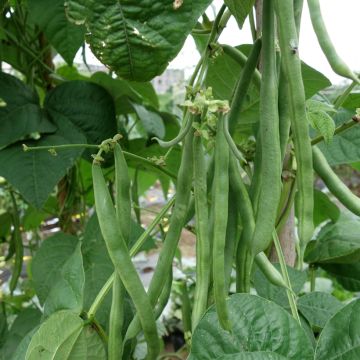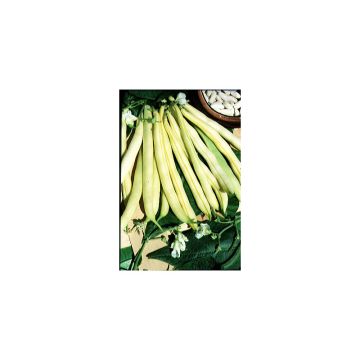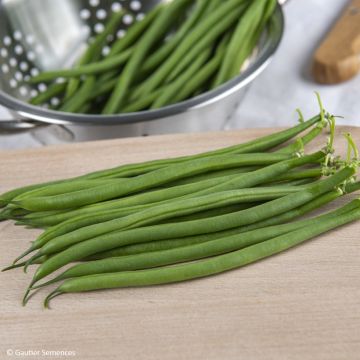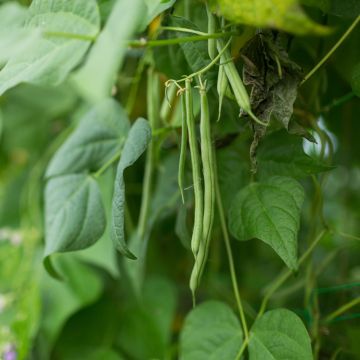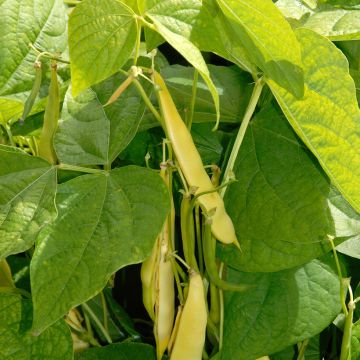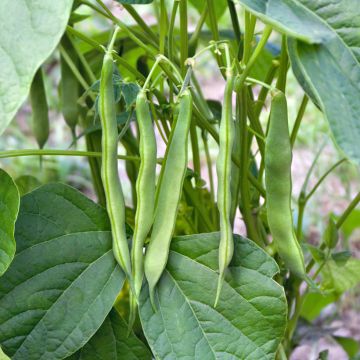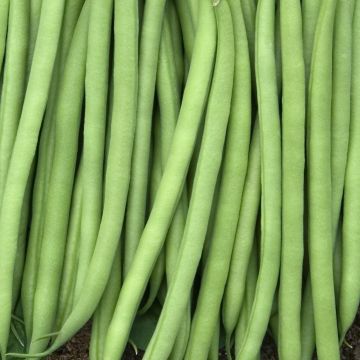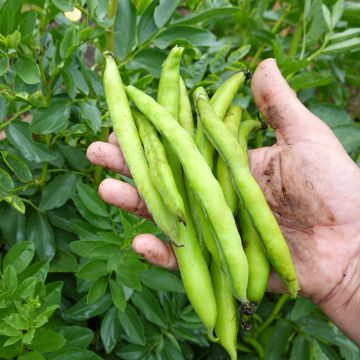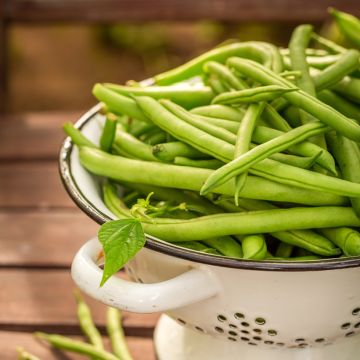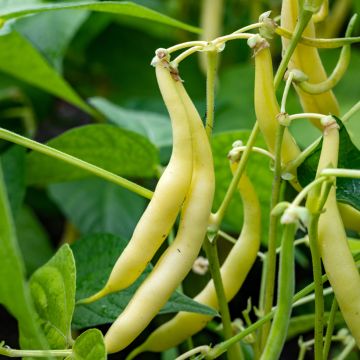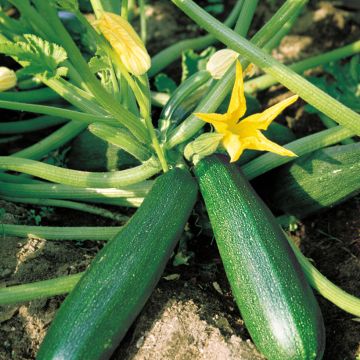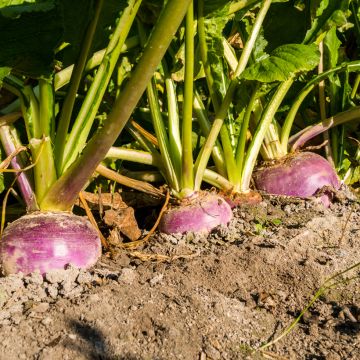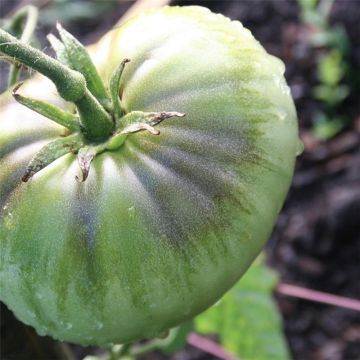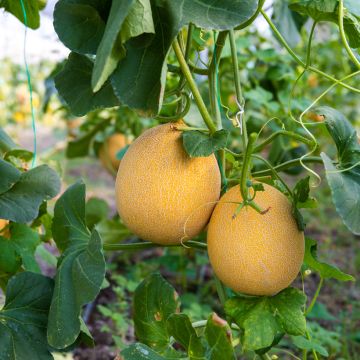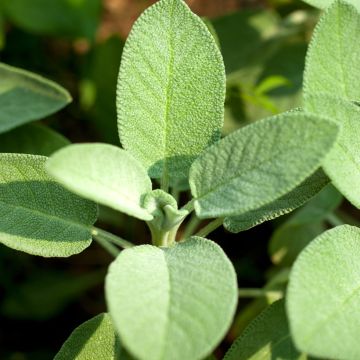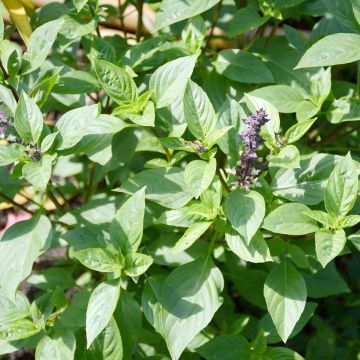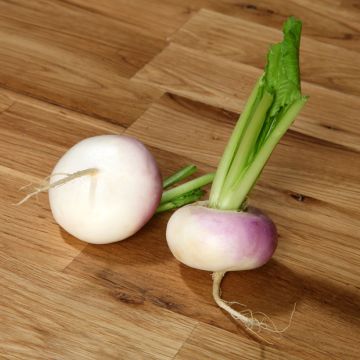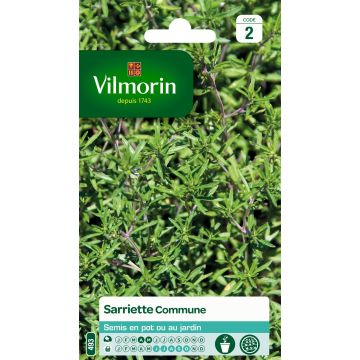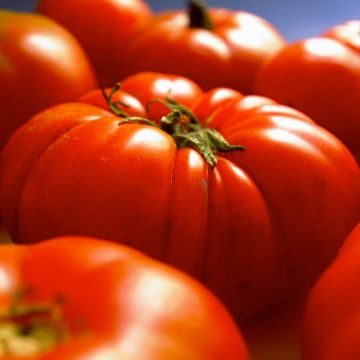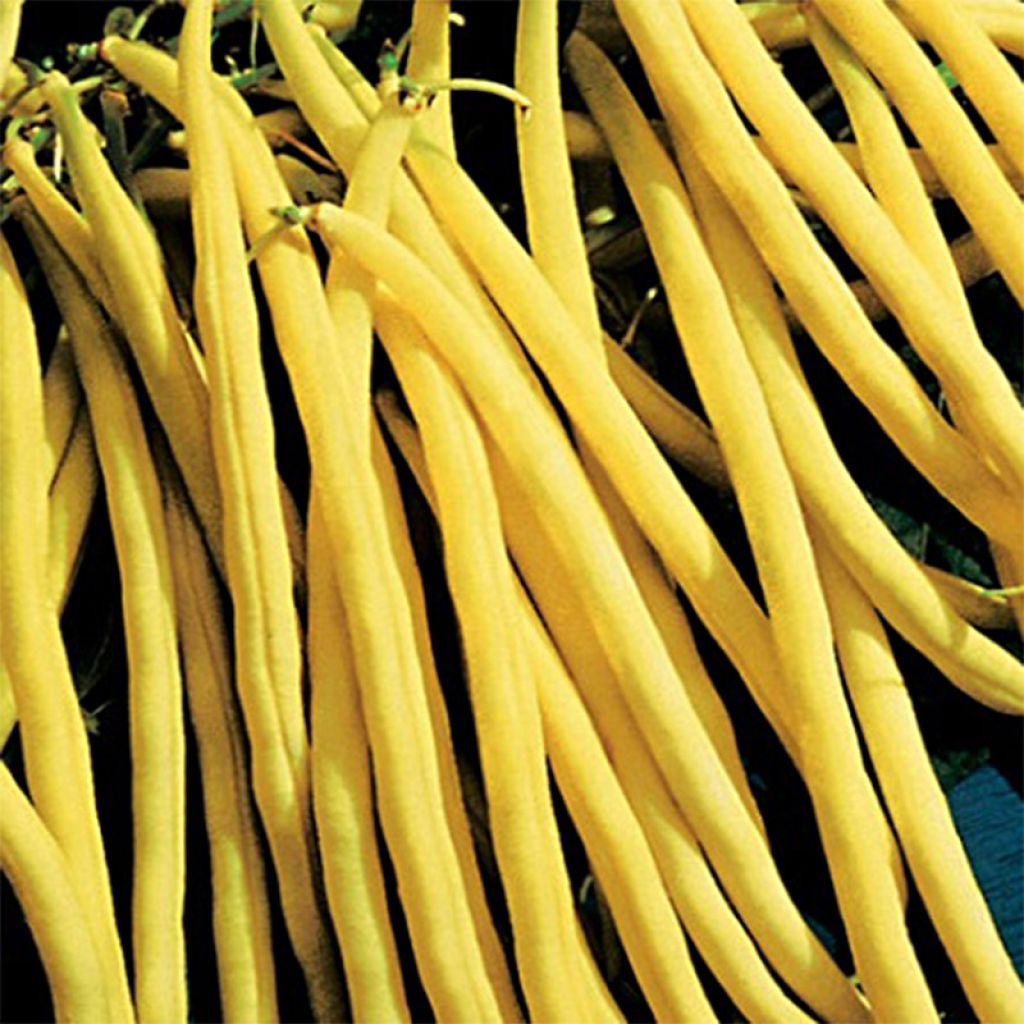

Dwarf mangetout butter bean Minidor
Dwarf mangetout butter bean Minidor
Phaseolus vulgaris Minidor
Common bean, French bean, Green bean
Last year I sowed this dwarf butter snap bean which is very productive and stringless. A delight to have in one's garden and a treat for the consumers' palate.
Jean-Marie, 22/03/2023
This item cannot be shipped to the selected country
Dispatch by letter from €3.90
More information
Dispatch by letter from €3.90
More information
Schedule delivery date,
and select date in basket
This plant carries a 6 months recovery warranty
More information
We guarantee the quality of our plants for a full growing cycle, and will replace at our expense any plant that fails to recover under normal climatic and planting conditions.
Seed-only orders are dispatched by sealed envelope. The delivery charge for seed-only orders is €3.90.
Description
The Minidor Dwarf Bean is a variety of French bean that produces a multitude of very bright golden yellow pods, about fifteen centimetres long and very fleshy. This highly prolific variety is particularly hardy. The soft and melting flesh is generally liked by children, making it easy to get them to eat beans. Minidor is highly resistant to diseases and robust under the weight of its own abundant production. It can be sown from April to August and harvested from July to October.
Whether consumed for its pod or its seed, the bean is a highly appreciated vegetable in gardens, as it is very easy to grow. It is so reliable that gardeners know the exact date when they will have their first harvest, 60 days after sowing.
Discovered in the New World and acclimatised in Europe from the 16th century, the bean has now become an essential legume in diets all over the world. Native Americans cultivated it for its dried seeds, but it was the Italians who, in the 18th century, introduced eating the whole immature pod.
The bean is a vine with indeterminate growth. Primitive varieties are all climbing and require trellising. Later, for practical reasons, dwarf varieties were selected, but all of them have tendrils that can wrap around a support.
The pods are usually green, sometimes yellow, striped with red, or even amethyst. Among the varieties that are eaten at the fine or extra fine stage, there are string beans that have filaments when ripe. Then, the pod becomes parchment-like and loses its taste.
The snap bean is generally meatier and can be consumed entirely, both the seeds and the pods, even when fully ripe. More recently created string - snap beans can be consumed when young at the extra fine stage, until they become meatier like a snap bean, as they do not form filaments.
Among the shelling varieties (i.e., those consumed only for their seeds), we can distinguish between the harvest of fresh beans and the harvest of dry beans, which is 90 days after sowing.
Immature green pods are rich in vitamins A, B9, and C, as well as trace elements and minerals. Dry beans are also rich in vitamin C, trace elements, and especially vegetable proteins.
Harvesting: the harvest of fresh beans or young pods begins 60 days after sowing. For fresh beans, it must be done before the pods start to dehydrate and develop wrinkles. The beans should barely take on their colour. For pod consumption, the harvest should take place every 2 or 3 days, both at the fine and extra fine stages for string beans. The harvest of dry beans is done by cutting the entire plant, which is then hung in a dry and airy place. They can be shelled as needed.
Storage: freezing is now the most common method of preservation. To do this, remove the stems, wash the pods, blanch them for 5 to 6 minutes in boiling water, then plunge them into cold water before drying them with a clean cloth. Once placed in a bag, the beans can be stored in the freezer at -18°C (-0.4°F). However, canning is regaining popularity among an increasing number of consumers due to the taste qualities inherent in this preservation method. Like freezing, remove the stems, wash and blanch the beans, then immerse them in cold water. Put them in jars and fill them with salted boiling water. Close the jars and sterilize them in a pressure cooker or with a sterilizer for 1 hour and 30 minutes over medium heat. To do this, completely cover the jars with water after securing them well.
Dry beans: once fully dry, bean seeds can be stored for up to a year if kept in good conditions, such as in airtight jars.
Gardener's tip: beans, like all members of the Fabaceae family, can fix nitrogen from the air in the soil through plant-bacteria symbiosis. They are therefore capable of regenerating the soil. Beans can be included in crop rotation after green manure.
Traditionally, bean cultivation in Central and South America is associated with the cultivation of squash and corn, forming a companionable trio. This association is locally called 'three sisters'. Beans also associate well with aubergines, carrots, cabbage, potatoes, and radishes, as they protect each other. Avoid planting them with alliums or fennel, as their growth will be inhibited.
A spray of nettle manure allows effective control of aphid attacks and also strengthens the plants.
Harvest
Plant habit
Foliage
Botanical data
Phaseolus
vulgaris
Minidor
Fabaceae
Common bean, French bean, Green bean
Cultivar or hybrid
Annual
Other Snap Beans
Planting and care
Soil preparation: Beans like light, moist, but not wet, nutrient-rich soil. However, it does not like soils that are too chalky or too acidic. Therefore, it is important to prepare the soil by deep digging to a depth of 20 cm (8in) without turning. Then add compost or well-rotted manure. Do not sow beans in soil that has been recently limed, as this causes hardening and reduces the taste quality of the pod.
Sowing under glass: Under glass or in tunnels, bean sowing can begin from mid-March. Beans are cold-sensitive vegetables and require a minimum soil temperature of 15°C (59°F). The glasshouses should be oriented to the south or west. Only ventilate them during the warmest hours of the day. Remove protection only when frost is no longer a concern.
Sowing in open ground: Sowing should be done from April in southern regions or from May once the soil has warmed up enough and frost is no longer a risk. Dig furrows 3 to 4 cm (1 to 2in) deep, spaced 40 cm (16in) apart. Sow your seeds 5 to 7 cm (2 to 3in) apart or in groups of 4 to 5 seeds, spaced 40 cm (16in) in all directions. Cover the soil and lightly compact it with a rake. When the plants reach 20 cm (8in) high, mound up the base to provide support.
The first harvests occur approximately 60 days after sowing, until the end of October. Sow beans every 15 days for continuous harvesting until the end of autumn.
There are different types of support for climbing beans: the Canadian tent, tipi, nets, or grids. Any tall element can become the support for this type of bean, giving them a very attractive appearance.
Seedlings
Care
Intended location
-
, onOrder confirmed
Reply from on Promesse de fleurs
Vegetable seeds
Haven't found what you were looking for?
Hardiness is the lowest winter temperature a plant can endure without suffering serious damage or even dying. However, hardiness is affected by location (a sheltered area, such as a patio), protection (winter cover) and soil type (hardiness is improved by well-drained soil).

Photo Sharing Terms & Conditions
In order to encourage gardeners to interact and share their experiences, Promesse de fleurs offers various media enabling content to be uploaded onto its Site - in particular via the ‘Photo sharing’ module.
The User agrees to refrain from:
- Posting any content that is illegal, prejudicial, insulting, racist, inciteful to hatred, revisionist, contrary to public decency, that infringes on privacy or on the privacy rights of third parties, in particular the publicity rights of persons and goods, intellectual property rights, or the right to privacy.
- Submitting content on behalf of a third party;
- Impersonate the identity of a third party and/or publish any personal information about a third party;
In general, the User undertakes to refrain from any unethical behaviour.
All Content (in particular text, comments, files, images, photos, videos, creative works, etc.), which may be subject to property or intellectual property rights, image or other private rights, shall remain the property of the User, subject to the limited rights granted by the terms of the licence granted by Promesse de fleurs as stated below. Users are at liberty to publish or not to publish such Content on the Site, notably via the ‘Photo Sharing’ facility, and accept that this Content shall be made public and freely accessible, notably on the Internet.
Users further acknowledge, undertake to have ,and guarantee that they hold all necessary rights and permissions to publish such material on the Site, in particular with regard to the legislation in force pertaining to any privacy, property, intellectual property, image, or contractual rights, or rights of any other nature. By publishing such Content on the Site, Users acknowledge accepting full liability as publishers of the Content within the meaning of the law, and grant Promesse de fleurs, free of charge, an inclusive, worldwide licence for the said Content for the entire duration of its publication, including all reproduction, representation, up/downloading, displaying, performing, transmission, and storage rights.
Users also grant permission for their name to be linked to the Content and accept that this link may not always be made available.
By engaging in posting material, Users consent to their Content becoming automatically accessible on the Internet, in particular on other sites and/or blogs and/or web pages of the Promesse de fleurs site, including in particular social pages and the Promesse de fleurs catalogue.
Users may secure the removal of entrusted content free of charge by issuing a simple request via our contact form.

































